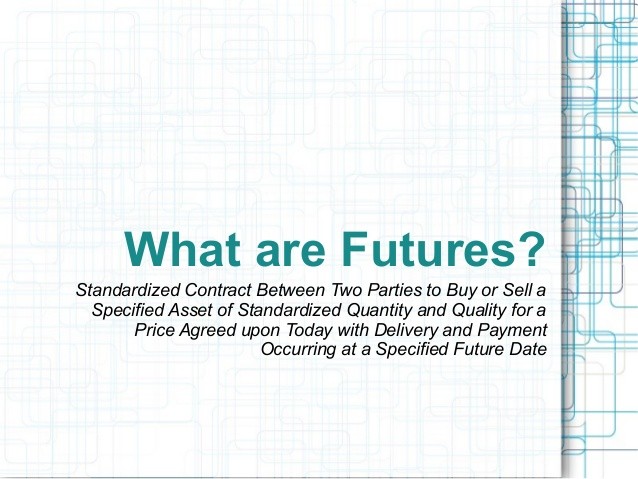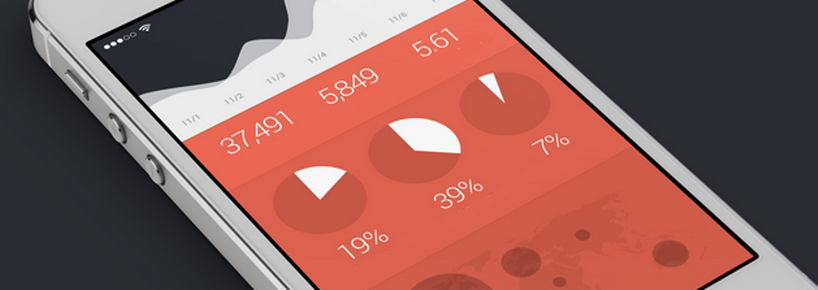What are Futures
Post on: 9 Июнь, 2015 No Comment

How Futures and ETFs Work Together
You can opt-out at any time.
Please refer to our privacy policy for contact information.
As you know, ETFs track an underlying asset. Be it a commodity, an index, or even a currency, for ETFs to be effective, they need to correlate pretty closely to their desired product. And in order to do that, many funds utilize derivatives. And while options. swaps and forwards are sometimes included in ETFs, it is futures contracts that are implemented the most.
So, if you are going to invest in ETFs, you need to know what is actually in an ETF. And with that in mind, let’s explore one of those components…futures.
What are Futures?
A future contract is an agreement between a buy and a seller based on an underlying asset. The seller agrees to deliver the asset to the buyer at a future date, but the price of the asset is determined on the date of the actual agreement.
Here is an example — It is currently October and you want to buy a November oil future for $95. The seller takes your $95 and on November’s expiration he technically owes you a barrel of oil. Will you actually get a barrel of oil? Probably not, but there will be compensation based on the price of oil on that particular day.
How do Futures Work?
Using our example, let’s say you are the owner of the futures contract (the buyer). You have a few options with your long position
Who Keeps Track of the Trades?
Unlike forward contracts, futures contracts are heavily regulated. There are Futures Contract Regulations and a Commodity Futures Trading Commission. Also, there is a clearing house involved. They act as a bank and keep track of your account, your trades, your profit and loss, your margins, and your fees. They handle the logistics behind rollovers and expirations as well.
Where Do Futures Trade?
Futures trade on futures exchanges, just as stocks trade on stock exchanges. The more popular futures exchanges in the US are in Chicago and New York – Chicago Board of Trade, Chicago Mercantile Exchange and New York Mercantile exchange.
There are also futures exchanges throughout the world like the Eurex (Europe), London International Financial Futures and Options Exchange and the Tokyo Commodity Exchange.
What are the Different Types of Futures?
Futures contracts are formed on many different types of assets. There are futures for…

What are the Risks with Trading Futures?
As with any investment, there is risk. Prices fluctuate as will the value of your assets, so before making any trade, futures or otherwise, it’s important to consult with an expert such as a financial advisor or a managed futures broker.
However, one particular issue with futures is their accuracy. This has been a heated debate lately, especially pertaining to commodity futures. Futures are designed to accurately track the price of an underlying asset, but since these derivatives have time value due to a future expiration, interest rates are a factor. Also, actual vs. perceived value plays a role in price fluctuations as well.
As we said, prices change, interest rates move, and traders have different opinions. All of this can cause a futures contract to inaccurately correlate with the underlying asset. This is what’s known in common language as a tracking error and there are two types of errors…
The goal of a futures contract is to track the related asset, but due to the factors above, these errors sometimes take form. And it can cause an ETF to have a tracking error as well, if the fund uses futures to accomplish its goal.
How and Why are Futures Used in ETFs?
Unlike and index or other assets, an ETF is a pre-packaged mini-portfolio designed to track an index without having to battle the price of a basket, or gain exposure to a commodity without creating a cattle farm on the front lawn. But because these funds are pre-packaged, there is not any active management (with apologies to actively managed ETFs ).
So in order to have some flexibility in tracking an asset, ETFs may use futures contracts that roll over when the opportunity arises. This helps the fund keep in line with current market conditions and thereby maintain accuracy. However, as stated above, futures are not perfect and this can cause tracking errors in the ETF at times.
But all in all, futures do help make ETFs an attractive investment. They give investors access to certain markets or assets without the hassle of rollovers, expirations, multiple fees, basket-pricing, and many other factors related to trading. And without a doubt many funds utilize futures to make the ETF achieve its goal.
So now you know why futures are sometimes built into ETFs, so don’t be scared when you “look under the hood” and see futures in the engine, but do be aware of why they are there, how they work, and their limitations.














